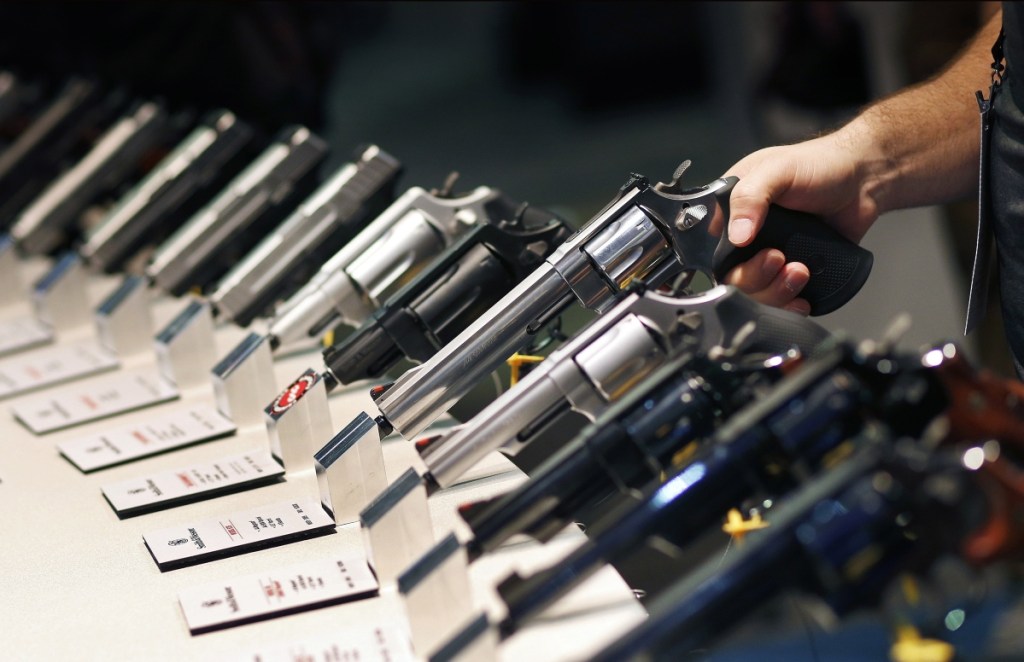The Second Amendment made a spectacular comeback in 2008, when the Supreme Court struck down a Washington, D.C., ban on handguns, which it followed in 2010 by overturning a similar Chicago law. For the first time, the justices held that the amendment protected the right of individuals to own guns for self-defense.
The decisions gave the Second Amendment new force, but left a lot of issues unresolved. Writing for the majority, Justice Antonin Scalia indicated the court had no problem with “longstanding prohibitions on the possession of firearms by felons and the mentally ill, or laws forbidding the carrying of firearms in sensitive places such as schools and government buildings, or laws imposing conditions and qualifications on the commercial sale of arms.”
But in the period since, the court has avoided taking cases involving restrictions on guns. Last year, when the justices declined to hear a challenge to California’s 10-day waiting period on gun purchases, Justice Clarence Thomas accused his colleagues of turning the Second Amendment into a “constitutional orphan.”
But recently, the court agreed to consider a challenge to a New York City law. It allows individuals who have city licenses to keep handguns at home to transport their weapons (unloaded, in locked containers) to gun ranges in the city, but not to ranges (or anywhere else) outside the city. Some residents would like to take their guns to facilities outside New York City, or to second homes upstate, and they see the ban as an infringement on their rights.
But a federal district court and an appeals court upheld the law. Gun owners have seven ranges where they may shoot in the city, the appeals court noted, and those who want to shoot elsewhere may rent guns or buy additional guns and keep them outside the city. The public safety benefits, then, “easily justify the insignificant and indirect costs (the law) imposes on Second Amendment interests.”
The court apparently had avoided such cases because four justices were inclined to overturn gun regulations and four were inclined to accept them — and neither cluster could be sure which way Anthony Kennedy, the likely deciding vote, would go. With Brett Kavanaugh taking his spot, the court appears to have a majority skeptical of gun control laws. But Chief Justice John Roberts, who is one of this group, could be a restraining influence.
This case will be the first test. The court could strike the law down on narrow grounds, suggesting it might accept other regulations — such as banning assault weapons or letting police temporarily take guns away from people deemed dangerous to themselves of others. Or it could take a more aggressive approach, casting serious doubt on such laws.
Lately, public opinion has shifted toward modest measures aimed at reducing gun violence. Good. The debate on firearms regulations is bound to be an issue in the 2020 elections, with the two parties starkly at odds. We hope the justices will grant the American people and their representatives the space to experiment with regulations in the hope of curtailing both the persistent street crime that occurs in places like Chicago and the mass shootings that have ravaged so many communities.
The basic right to own guns is firmly ensconced in constitutional law. But Americans are assessing how to balance that right with rules that make it harder for dangerous people to terrorize innocents. The court would be wise not to stand in the way.
Editorial by the Chicago Tribune
Visit the Chicago Tribune at www.chicagotribune.com
Distributed by Tribune Content Agency, LLC.
Send questions/comments to the editors.



Success. Please wait for the page to reload. If the page does not reload within 5 seconds, please refresh the page.
Enter your email and password to access comments.
Hi, to comment on stories you must . This profile is in addition to your subscription and website login.
Already have a commenting profile? .
Invalid username/password.
Please check your email to confirm and complete your registration.
Only subscribers are eligible to post comments. Please subscribe or login first for digital access. Here’s why.
Use the form below to reset your password. When you've submitted your account email, we will send an email with a reset code.